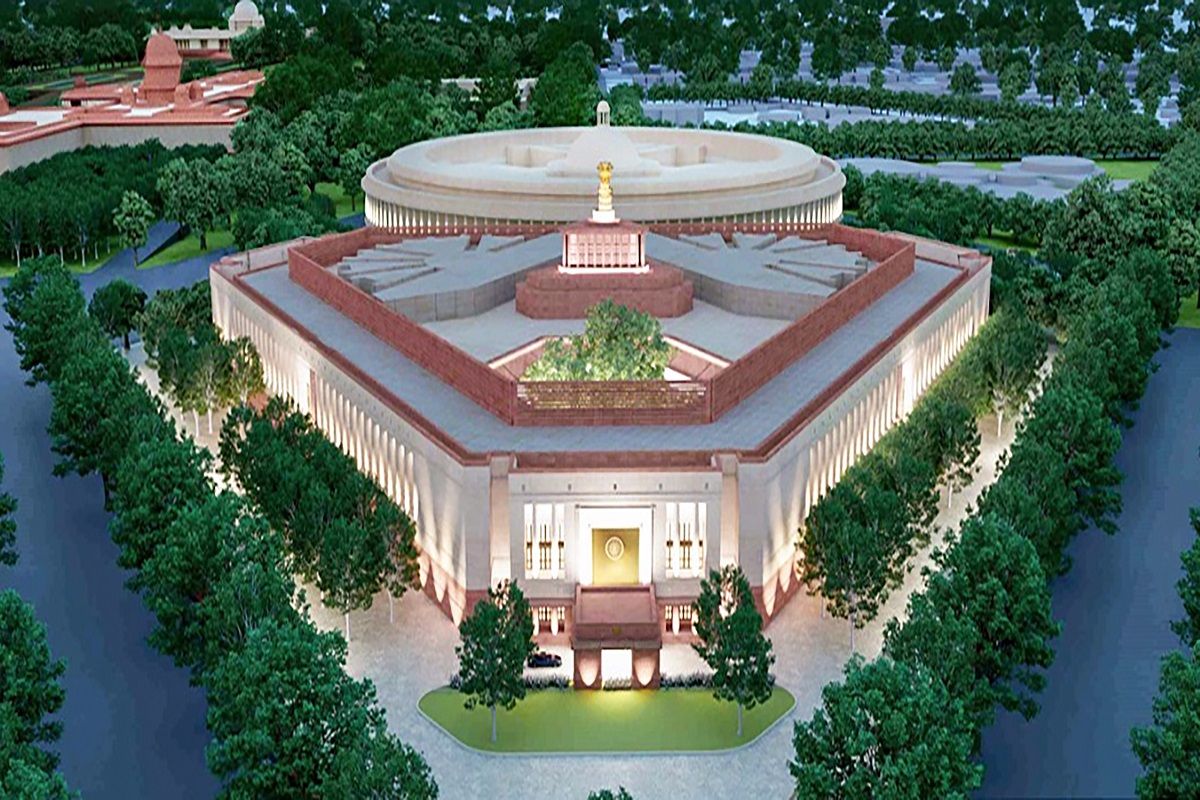Unveiling the Significance and Shubh Muhrat of India’s New Parliament House and the Sceptre Symbol From an Astrological Point of View!!
New Delhi, which is the heart of India’s democratic front, is all set to witness the momentous occasion as the nation prepares to inaugurate its magnificent latest Parliament building. This architectural marvel not only signifies a new chapter in India’s political landscape but also boasts some of the most thrilling features that add a touch of grandeur as well as symbolism to its overall design. As the ‘Mother of Democracy’ unveils this splendid structure, it’s time to dive into the intriguing details that make it absolutely extraordinary.
The Prime Minister of India, Mr. Narendra Modi will inaugurate the new parliament building on 28th of May, at the shubh Muhrat of 12 P.M. (Noon).
Witnessing a New Era: Inauguration of India’s Iconic New Parliament House
- Entrances that Evoke Majesty and Meaning
Within the new Parliament house, each entrance has been thoughtfully christened, infusing them with a profound significance. Apart from the numeric nomenclature of the current Parliament House, the new entrances bear names that embody powerful concepts with ideals. Gyan Dwar, Karma Dwar, and Shakti Dwar are the evocative names bestowed upon these portals, showcasing strength, knowledge, and action. These names pay tribute to the core values that form the bedrock of India’s democratic ethos.
- Honoring Visionary Leaders
Embracing its rich heritage as well as honouring the visionary leaders who have shaped the country, the new Parliament building will proudly showcase statues of prominent personalities. Among them, the iconic figure of Mahatma Gandhi, the father of the nation, will stand tall, serving as a constant reminder of his profound teachings of nonviolence with the truth. Along with this, Chanakya, the ancient Indian philosopher & statesman, will also be commemorated for his wisdom & strategic acumen. Sardar Vallabhbhai Patel, the Iron Man of India, and BR Ambedkar, the architect of the Indian Constitution, will inspire and guide lawmakers and citizens alike. These statues will inspire & guide the leaders and citizens of India as they navigate the path of progress.
- A Potential for a New Identity
With the inauguration of this awe-inspiring structure, whispers of a possible name change for the new Parliament building have emerged. As India embraces this new symbol of democracy, there is a chance that it will be christened with a name that reflects its grandeur & pure significance. This renaming process presents an opportunity to bestow upon the edifice a title that resonates with the aspirations and spirit of the nation.
- Thoughtful Design to Navigate Protests
The design of the new building takes into account the need for an orderly as well as efficient parliamentary process. Notably, the wells in the chamber will be positioned approximately a foot below the 1st row, posing a challenge for disruptive protests to garner camera footage. The new arrangement aims to discourage any disruption & promote constructive parliamentary proceedings.
What exactly is ‘Sengol’ Better Known as Sceptre to be installed by India’s Prime Minister Modi on May 28 in the new Parliament?
‘Sengol’, also known as the Sceptre, holds significant historical value as it originated in Tamil Nadu. This ancient artefact was entrusted to India’s inaugural Prime Minister, Jawaharlal Nehru, symbolizing the British power transition, and had been housed in a museum in Allahabad. On May 28, Prime Minister Narendra Modi will personally oversee the installation of the Sengol within the new Parliament building.
The practice of using the Sengol traces back to the Chola dynasty, where Samayacharyas, esteemed spiritual leaders, would lead the coronation ceremonies of kings and bestow divine sanctity upon the transfer of power. This act served as a profound acknowledgement of the ruler’s authority. The Tamil kings considered the Sengol as a representation of justice and effective governance. The epics Silapathikaram and Manimekalai extensively document the significance attributed to the Sengol.
In adherence to the ancient Chola tradition, the leader of the Thiruvavaduthurai Aadeenam, a revered Shaivite math, presented the Sengol to Prime Minister Nehru, symbolizing the momentous handover of authority from the British to the Indian people. This presentation occurred in 1947, when Nehru was bestowed with the Sengol by the head of the Thiruvavaduthurai Aadeenam math.
Astrological Significance of Sceptre Symbol:
In astrology, the sceptre is a symbol of power, authority, as well as divine sovereignty. It showcases the cosmic energy that flows through the universe and empowers individuals or institutions with the ability to govern and lead. The sceptre acts as a conduit for divine blessings, bestowing wisdom, strength, and harmony upon those entrusted with its symbolic power.
Astrological Alignment of India’s New Parliament Building:
The design of India’s new Parliament building has been carefully planned and executed to align with astrological principles. The inclusion of the sceptre symbol within the structure ensures that the building becomes a reservoir of positive cosmic energies that can influence the nation’s destiny.
- Empowering Leadership: The sceptre symbol within the Parliament building serves as a constant reminder of the responsibilities entrusted to the nation’s leaders. It inspires them to lead with integrity, wisdom, and fairness, ensuring the progress and prosperity of the nation.
- Harmonious Governance: Astrologically, the sceptre symbol brings a harmonizing energy that fosters unity and cooperation among members of parliament. It encourages dialogue, consensus-building, and balanced decision-making, leading to the effective functioning of the legislative process.
- Divine Blessings: The sceptre symbol acts as a channel for divine blessings, inviting positive cosmic forces to influence the parliamentary proceedings. It infuses the space with auspicious energies, attracting prosperity, stability, and spiritual enlightenment.
- National Destiny: From an astrological perspective, the presence of the sceptre symbol within the Parliament building can influence the trajectory of India’s national destiny. It signifies a period of growth, progress, and transformative change, empowering the nation to fulfill its highest potential.
Shubh Muhrat of Inauguration:
The auspicious date of the inauguration will be on 28th of May, and this amazing date coincide with the birth Anniversary of VD Savarkar (Hindutva Ideologue). A Subh Muhrat will begin at 12p.m. (Noon).
The inauguration of India’s new Parliament building holds immense astrological significance, especially with the incorporation of the Sceptre symbol. This symbol represents the divine authority, power, and wisdom necessary for effective governance and leadership. By aligning the building’s design with astrological principles, India invites positive cosmic energies to shape its destiny and guide its path towards prosperity and harmony. As the nation embarks on this new chapter, the Parliament building stands as a beacon of hope, strength, and unity, symbolizing a bright and prosperous future for India and its people.



